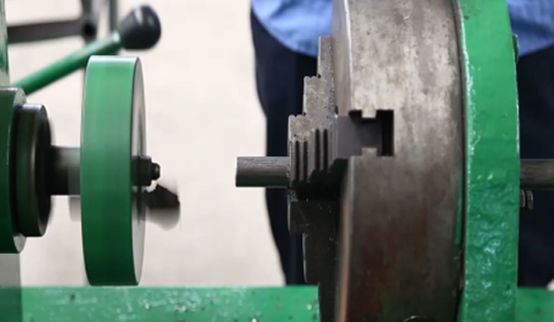 Afrikaans
Afrikaans  Albanian
Albanian  Amharic
Amharic  Arabic
Arabic  Armenian
Armenian  Azerbaijani
Azerbaijani  Basque
Basque  Belarusian
Belarusian  Bengali
Bengali  Bosnian
Bosnian  Bulgarian
Bulgarian  Catalan
Catalan  Cebuano
Cebuano  Corsican
Corsican  Croatian
Croatian  Czech
Czech  Danish
Danish  Dutch
Dutch  English
English  Esperanto
Esperanto  Estonian
Estonian  Finnish
Finnish  French
French  Frisian
Frisian  Galician
Galician  Georgian
Georgian  German
German  Greek
Greek  Gujarati
Gujarati  Haitian Creole
Haitian Creole  hausa
hausa  hawaiian
hawaiian  Hebrew
Hebrew  Hindi
Hindi  Miao
Miao  Hungarian
Hungarian  Icelandic
Icelandic  igbo
igbo  Indonesian
Indonesian  irish
irish  Italian
Italian  Japanese
Japanese  Javanese
Javanese  Kannada
Kannada  kazakh
kazakh  Khmer
Khmer  Rwandese
Rwandese  Korean
Korean  Kurdish
Kurdish  Kyrgyz
Kyrgyz  Lao
Lao  Latin
Latin  Latvian
Latvian  Lithuanian
Lithuanian  Luxembourgish
Luxembourgish  Macedonian
Macedonian  Malgashi
Malgashi  Malay
Malay  Malayalam
Malayalam  Maltese
Maltese  Maori
Maori  Marathi
Marathi  Mongolian
Mongolian  Myanmar
Myanmar  Nepali
Nepali  Norwegian
Norwegian  Norwegian
Norwegian  Occitan
Occitan  Pashto
Pashto  Persian
Persian  Polish
Polish  Portuguese
Portuguese  Punjabi
Punjabi  Romanian
Romanian  Russian
Russian  Samoan
Samoan  Scottish Gaelic
Scottish Gaelic  Serbian
Serbian  Sesotho
Sesotho  Shona
Shona  Sindhi
Sindhi  Sinhala
Sinhala  Slovak
Slovak  Slovenian
Slovenian  Somali
Somali  Spanish
Spanish  Sundanese
Sundanese  Swahili
Swahili  Swedish
Swedish  Tagalog
Tagalog  Tajik
Tajik  Tamil
Tamil  Tatar
Tatar  Telugu
Telugu  Thai
Thai  Turkish
Turkish  Turkmen
Turkmen  Ukrainian
Ukrainian  Urdu
Urdu  Uighur
Uighur  Uzbek
Uzbek  Vietnamese
Vietnamese  Welsh
Welsh  Bantu
Bantu  Yiddish
Yiddish  Yoruba
Yoruba  Zulu
Zulu Different Types of Conveyor Pulleys and Their Applications in Bulk Material Handling Systems
Understanding Conveyor Pulley Types A Guide to Efficiency and Reliability
Conveyor systems are essential in various industries, facilitating the movement of materials from one point to another with ease and efficiency. At the heart of these systems lies the conveyor pulley, a critical component that plays a pivotal role in the functionality and effectiveness of conveyors. This article aims to explore the different types of conveyor pulleys, their applications, and their significance in ensuring the seamless operation of conveyor systems.
What is a Conveyor Pulley?
A conveyor pulley is a cylindrical device that is mounted on a conveyor system and serves various purposes, including supporting and driving the belt. Pulley types can vary based on their function, design, and the environment in which they operate. The primary functions of conveyor pulleys include tensioning the belt, guiding the belt along its path, and providing a surface for the conveyor belt to run upon.
Types of Conveyor Pulleys
1. Drive Pulley The drive pulley is the primary power-transmitting element of a conveyor system. Positioned at the head of the conveyor, it is responsible for pulling the belt forward. Typically larger in diameter, drive pulleys can be equipped with a lagging surface to improve friction between the belt and the pulley, thus ensuring effective power transfer.
2. Idler Pulley Idler pulleys are used to support the conveyor belt and maintain its alignment. They do not receive any power from the drive motor but are crucial for maintaining belt tension and supporting the load throughout the conveyor's length. Idler pulleys can come in various designs, including fixed, adjustable, or gravity-fed types, depending on the specific needs of the conveyor system.
3. Tail Pulley Located at the end of the conveyor system, the tail pulley helps to redirect the belt back to the drive pulley. It plays a crucial role in the overall operation of the conveyor by maintaining tension and ensuring smooth belt movement. Tail pulleys may also serve as a belt storage area during maintenance.
conveyor pulley types

4. Snub Pulley Snub pulleys are employed to increase the angle of wrap around the drive pulley, thereby enhancing the grip between the pulley and the belt. This type is particularly useful when a conveyor requires additional traction to move heavy loads or when it operates at a critical incline.
5. Return Pulley The return pulley is situated on the non-load-carrying side of the conveyor system, supporting the belt as it returns to the drive pulley. Properly designed return pulleys minimize wear and tear on the conveyor belt and ensure a smooth return path, which is vital for prolonging the lifespan of the belt.
Importance of Conveyor Pulleys
Understanding the various types of conveyor pulleys and their functionalities can significantly impact the efficiency and reliability of a conveyor system. Selecting the right type of pulley can help reduce downtime, lower maintenance costs, and increase overall productivity.
The choice of pulley must be aligned with the specific application requirements, including the type of materials being transported, the operational environment, and the desired speed and incline of the conveyor. For example, heavy-duty applications may require robust drive pulleys with advanced lagging, while lighter systems might suffice with standard idler pulleys.
Conclusion
In conclusion, conveyor pulleys are integral components that contribute to the effectiveness of conveyor systems. By understanding the different types of pulleys and their functions, industries can optimize their operations, enhance material handling processes, and ensure reliable and efficient production workflows. Investing in the right pulleys not only improves conveyor performance but also leads to long-term cost savings and increased productivity.
-
Wing Pulley Conveyor for Conveyor Belt MaintenanceNewsJun.16,2025
-
Self Cleaning Spiral Idler for Conveyor DesignNewsJun.16,2025
-
Pulley Lagging for Conveyor Belt AlignmentNewsJun.16,2025
-
Impact Idlers Used in Belt Conveyor for PerformanceNewsJun.16,2025
-
Ceramic Lagging Conveyor Pulley for Conveyor Belt SystemsNewsJun.16,2025
-
Belt Conveyor Idler for Heavy-Duty ApplicationsNewsJun.16,2025





























